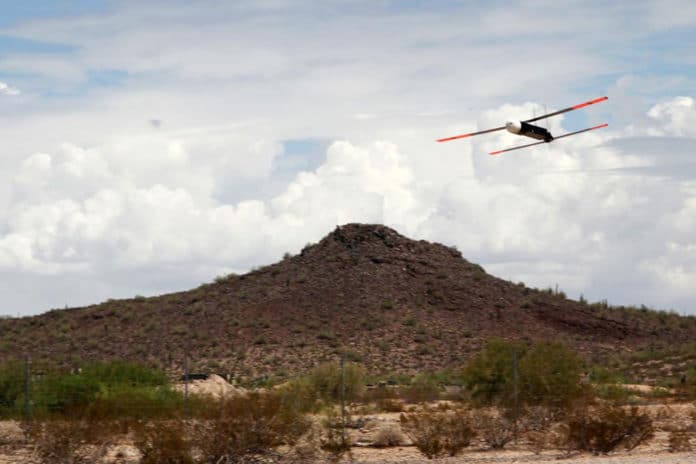Raytheon Missiles & Defense successfully defeated a swarm of drones with its reusable Coyote Block 3 non-kinetic effector during a U.S. Army test, achieving the Army’s first “air-to-air non-kinetic defeats.” The demonstration moves the variant closer to deployment.
The tests were conducted by the Army’s Indirect Fires and Rapid Capabilities Office (IF/RCO) at Yuma Proving Ground in Arizona. During the test, the Coyote engaged and defeated a swarm of 10 drones that differed in size, complexity, maneuverability, and range.
The Raytheon Coyote unmanned aircraft system is small, expendable, and tube-launched. It can be deployed from the ground, air, or a ship – such as from larger aircraft or even unmanned underwater vehicles (UUVs) and unmanned surface vehicles (USVs). The Coyote UAS can be flown individually or netted together in swarms, and it is adaptable for a variety of missions, including surveillance, electronic warfare, and strike. The system will operate for up to one hour and is designed for interchangeable payloads.

The Coyote first flew in 2007, featuring a rear pusher prop, a set of pop-out wings, and a pop-up V-tail. The Block 2 Coyotes didn’t appear publicly until 2018, sporting a more missile-like appearance without wings.
Derived from the expendable Coyote loitering munition, Block 3 utilizes a non-kinetic warhead to neutralize enemy drones, reducing potential collateral damage. In addition to proving the Coyote’s anti-swarm capabilities, the recent demonstration also proved that the non-kinetic variants could be recovered, refurbished, and reused without leaving the battlefield.
“This test demonstrates the effectiveness of Coyote to counter complex, unmanned aircraft systems,” said Tom Laliberty, vice president of Land Warfare & Air Defense at Raytheon Missiles & Defense. “As a non-kinetic variant, we’re offering an effective weapon against the threat and value to the Army in the form of an affordable, reusable asset.“
Raytheon states that the recent tests at Yuma also achieved several significant firsts for the Coyote asides from the air-to-air non-kinetic defeats, including “survivability, recovery, refurbishment and reuse during the same test event,” successful launch from the Coyote Block 2 system, and extended range engagements, communication and KuRFS (Raytheon’s Ku band radiofrequency system) radar track.
Earlier this year, the American company Lockheed Martin introduced a similar Counter-Unmanned Aerial System (C-UAS) interceptor, called MORFIUS. The interceptor is capable of simultaneously defeating multiple threats in a single defensive attack and combating swarms.
